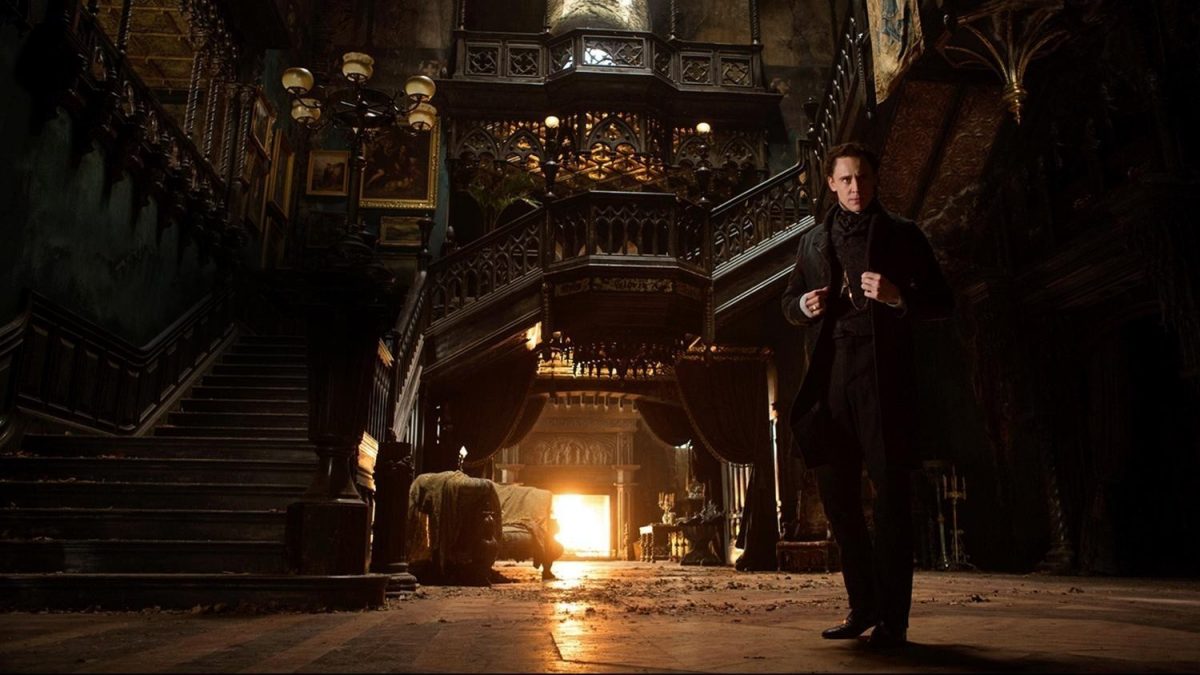 (3.5 / 5)
(3.5 / 5)
With Crimson Peak, beloved horror director Guillermo Del Toro sets about creating another period ghost story.
While his previous work of course includes The Devil’s Backbone and Pan’s Labyrinth, both of which are set in and around the Spanish Civil War, this entry on his filmography takes its cues more from classic Gothic melodrama.
The film follows Edith (Mia Wasikowska), the bookish only child of surly yet benign, self-made New York industrialist Carter Cushing (Jim Beaver playing to type). When Sir Thomas Sharpe (Tom Hiddleston), a Baronet, arrives from England, Edith is quick to write him off, sight unseen, as a Bourgeois parasite. When the two do meet, however, she finds herself charmed by the dashing, Byronic figure and things quickly go the way of Daphne Du Maurier’s Rebecca.
Their fairy-tale romance, however, is impinged upon by a sudden and brutal tragedy. It’s a particularly gory tragedy involving a shattered skull and lacerated scalp, lovingly rendered by some of the same team behind Del Toro’s The Strain. As such, Edith solemnly returns with Thomas to his ancestral home, the foreboding Allerdale Hall.
A vast, decaying pile with battered turrets stretching towards the skies and red clay oozing up from the earth below, a definite fixer-upper to which the Sharpes — Thomas and his pale, suspicious sister, Mrs. Danvers-alike Lucille (Jessica Chastain) — seem preternaturally attached. The central turret over the main lobby is caved in, allowing in a steady stream of leaves or snow, depending on the season and/or required mood.
While Thomas struggles to devise and build the machinery that will allow him to mine the clay and restore family’s squandered fortune, and Lucille drifts around the hall in high-collared black dresses like some tea-obsessed Big Bad Wolf, Edith finds herself the focus of a terrifying red-boned apparition. An apparition apparently portrayed by none other than long-time Del Toro collaborator Douglas Jones (The Pale Man in Pan’s Labyrinth, Abe Sapien in Hellboy).
Edith, it seems, is sensitive to certain forces in a way that the close-knit Sharpes are not and she soon finds herself investigating the secrets of so-called Crimson Peak. According to a theory laid out by Conan Doyle enthusiast Doctor McMichael (Charlie Hunnam) through the now debunked medium of spirit photography, no less. The means of their conveyance — via prerecorded wax cylinder — are somewhat convenient, but a necessary evil of storytelling.
With its baroque furnishings and dingy William Morris wallpaper, the house, like its inhabitants, is all about the silken interplay between light and shadow. Edith’s bedroom, for instance, has these strange inverted cupolas on the ceiling, as in the ’99 remake of The Haunting, though in this case the architecture leaves the menacing up to the spooks.
All the familiar touches are there — the portrait of the stern, long-deceased matriarch, the atmospheric iris wipes, and the moans and groans of ancient fireplaces —but the film’s sumptuous squalor transcends these genre trappings with a twisty-turny finale with just a touch of Kubrick. Fernando Velazquez’s score, meanwhile, is most effective when at its most minimal, like a single off-key piano note reverberating through dark hallways.
Offering a tale of phantasmagoric peturbation, Crimson Peak shows that, in an exploration of love and madness, style can sometimes become substance.
